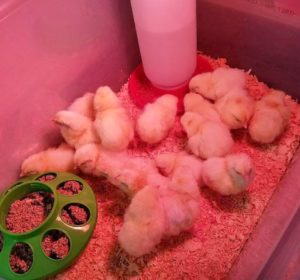Tips for successful chick hatches
COLLEGE STATION – Following Texas A&M AgriLife Extension Service recommendations can improve successful chick hatches.

Dr. Greg Archer, AgriLife Extension poultry specialist, College Station, said the 21-day hatch period can go wrong in many ways, but taking precautions and following scientific steps can lead to consistently good hatches.
Archer said several precautions should be taken before incubating eggs to improve the likelihood of a successful hatch.
Store eggs at 60-69 degrees and 75-80% relative humidity as quickly as possible after they are laid, Archer said. Do not wash eggs that will be incubated, and don’t incubate excessively dirty eggs.
Store eggs with the large end up, and set eggs angled 3-10 like hands on a clock after they are laid, he said.
Don’t incubate eggs that are blood-stained, cracked, dirty, elongated, rounded, toe punched, wrinkled or small or double, Archer said.
“Blood or fecal matter can contaminate the incubator with bacteria and compromise the other eggs,” he said. “Eggs that are misshapen shouldn’t be incubated because chicks have a hard time getting out.”
Make sure the incubator is working correctly and consistently before incubating eggs, he said. Follow the directions for the incubator in use, and turn it on several days before eggs are set.
Make sure temperatures are 99.5-100.5 degrees, and check at least twice a day, Archer said.
“Fluctuations in temperatures can cause a poor hatch,” he said. “If possible, use thermometers that have probes or other remote monitoring to minimize the number of times you have to open the incubator.”
Incubators perform best in rooms that are 70-80 degrees with no draft, he said. It should be set on a level surface that receives no direct sunlight and away from corners or against any wall or barrier.
Archer said the incubator should maintain 55-60% relative humidity. Humidity level is one of the factors amateurs have the most problem with.
“Humidity is important because it can affect the hatch if it’s too high or too low,” he said. “The surface area of the water, not the depth, influences humidity in the incubator. If you need to increase the humidity, you can use wet crumpled paper towels or sponges. The key is increasing the surface area.”
Candle eggs – put them against a flashlight – at 10-12 days of incubation to make sure embryos are still viable, Archer said. Remove any nonviable eggs to prevent contamination of the remaining hatch.
Remove or turn off the incubator’s egg turner three days before the hatch, Archer said.
“Chicken eggs shouldn’t be turned after day 18,” he said. “Eggs should be laying on their side.”
Humidity should then be increased to 65-70% relative humidity, he said. The vent plug should be removed if water droplets appear inside the incubator.
The incubator’s lid should not be removed after day 18, Archer said. If it must be removed to check water levels on day 20, do it quickly.
“Chicks may take nearly 24 hours to hatch,” Archer said. “Do not help the chicks out of their shells. If they cannot hatch themselves, they likely will not survive.”
Once chicks successfully leave the shell, leave them in the incubator for 24 hours or until they are completely dry, Archer said.


